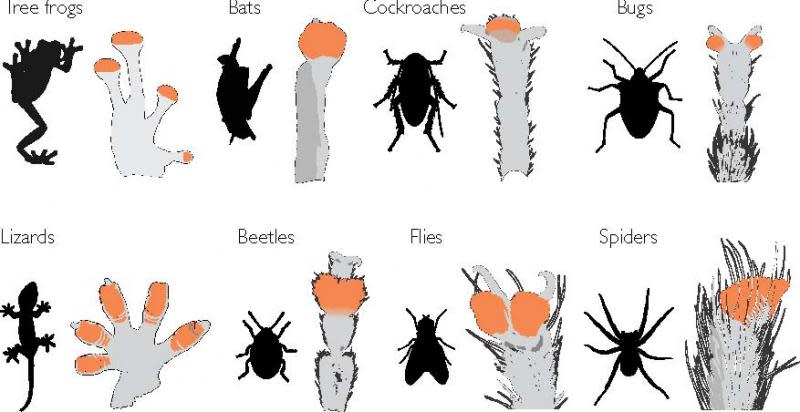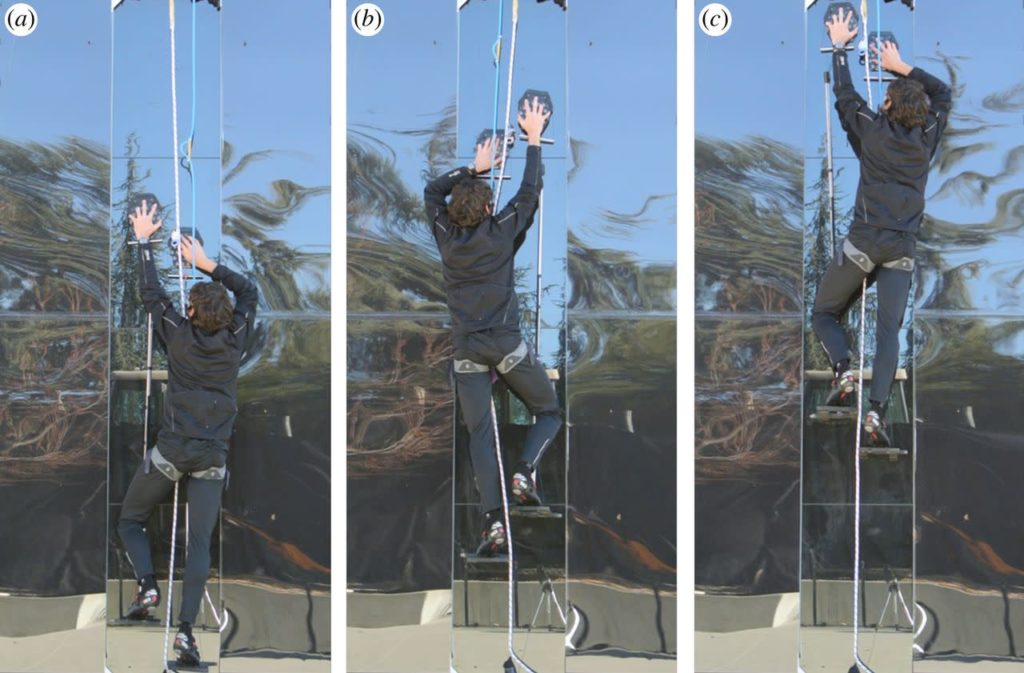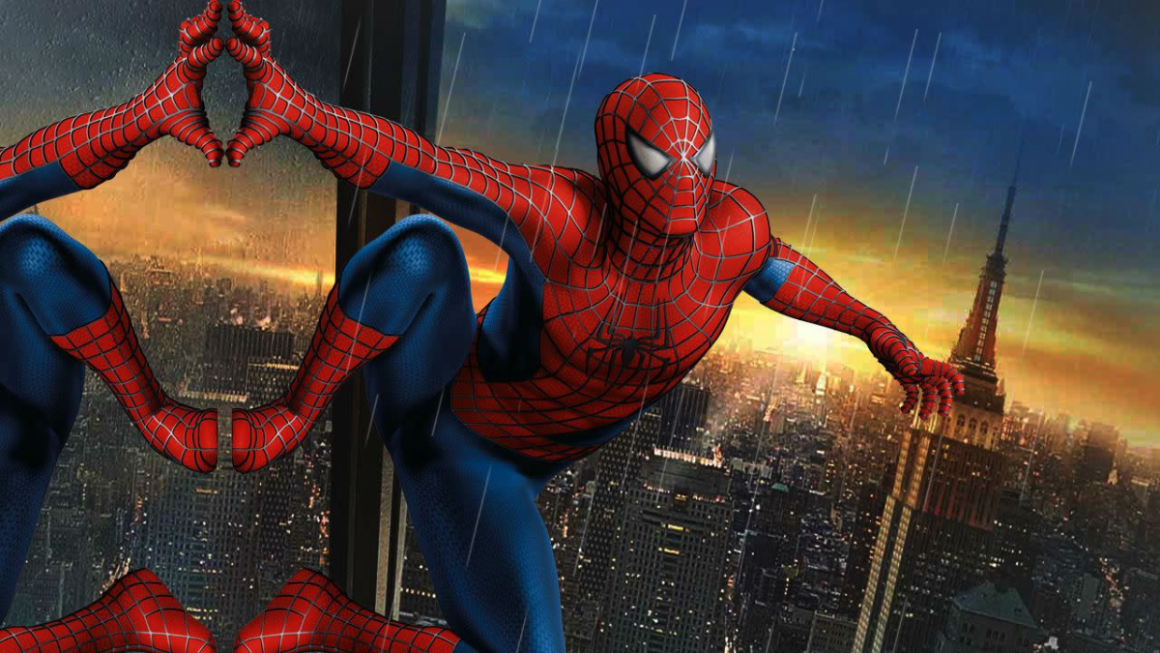Earlier this month, scientists from the University of Cambridge published an article in the Proceedings of the National Academy of Sciences titled, "Extreme positive allometry of animal adhesive pads and the size limits of adhesion-based climbing." This article said basically one thing: geckos are the largest creatures that can climb walls. Stephen Colbert lamented the study's finding on The Late Show, calling it, "a Ph.D. thesis on destroying my childhood". This means Spider-Man's wall-crawling might be impossible
Not to be outdone in a truly epic nerd battle, engineers from Stanford spoke up. This was far from a nerd debate. These Stanford engineers had actually built special pads that, when affixed to your palms, will support a person's weight and allow them to climb walls. Take that, Cambridge! In a YouTube video, one of Standford's engineers throws down and tells Colbert that the Cambridge scientists are just wrong.
...if you don't just copy the gecko but instead you are clever about how you distribute the weight... a human can climb a glass wall.
So, who won this epic brainiac smackdown? And did we really fund research into climbing walls like Spider-Man? Surely science can make geek fantasy come true!
The Science of Climbing Walls Gecko Style
The gecko's ability to climb smooth surfaces is due to the tiny, spatula-shaped, hair-like structures or seta on the pads at the bottom of their feet. The van der Waals force is a relatively weak force that holds molecules together by rearranging the way electrons are distributed. Though each individual hair produces a very small charge and force of attraction, the millions of striated hairs really add up and this allows the pads to generate enough electrical force to support a gecko's weight.

The gecko is not the only creature that climbs surfaces in this way. Seta can be found in bats, tree frogs, lizards, cockroaches, and (yes) spiders. Study authors, Labonte et. al., measured the size of the footpads relative to the body surface area of some 225 animals to find a relationship between the footpad area and body size. They found that the adhesive pads in mites, require 200 times less body surface area than geckos to cling to walls.
This has several implications, not just for Spider-Man fans, but for science in general. By figuring a scaling law, we can extrapolate how much setae a human needs to climb walls. In a press release, the Cambridge scientists announced that a human would need adhesive pads covering 40% of their body surface in order to walk up a wall like Spider-Man.

The reason behind this has its roots in physics: the scaling laws first discovered by Galileo in 1638. Smaller creatures, like ants, have a lot more surface area to volume but with larger animals, the situation is reversed. An elephant's surface area to volume is small compared to an ant. This has a few implications. For one, it means that if we were to increase the size of an ant, say with radiation, like in the movie Them!, body proportions also have to change. The legs of an ant will have to be thicker to support its new, more massive structure.

Bigger animals weigh more and thus need more sticky surface area to cling to a surface. As the ratio of body surface area to volume decreases with larger animals, there will come a point a large animal will not have enough sticky pad area, even if the entire body was covered, to cling to walls. Based on their calculations, the Cambridge scientists estimate that the humble gecko is pretty much the biggest size possible.
Wall-crawling (for real)
Two years ago, engineers from Stanford University published a paper titled, "Human climbing with efficiently scaled gecko-inspired dry adhesives," in the journal Interface demonstrating their wall-climbing abilities. Lead author, Elliot Hawkes (the same guy who sent the YouTube video to Colbert), is seen scaling a wall with his research group's gecko pads, a pretty daredevil move when you think about it. Basically, if you believe in the science you should be willing to break your neck for it.

So, was Cambridge wrong? Are they now inferior to Stanford? Well, not quite on both counts. The Cambridge scientists' calculations are based on gecko feet and the microscopic structure of those footpads are different from Stanford's. So while body size and volume are factors, so too is footpad structure.
The gecko's setae are special. The underside of a gecko toe bears a series of ridges, which are covered with uniform ranks of setae, and each setae further divides into hundreds of split ends and flat tips called spatulas. This allows for a lot of charge buildup along the length of the hairs and this supports the gecko's weight.

Stanford's wall climbing is based on something very different. Their gecko pad is covered with 24 adhesive tiles, and each of these is covered with sawtooth-shaped polymer structures each 100 micrometers long (about the width of a human hair). Each pad is connected to special degressive springs, which become less stiff the further they are stretched. As the springs are pulled upon, they apply an identical force to each adhesive tile and cause the sawtooth-like structures to flatten.

This means when the pad first touches the surface, only the tips touch, which means the surface is not very sticky. When a load is applied, the wedges lie flatter along with the glass and creates an adhesion force; the pads become very sticky. This design allows pads that can support a person's weight to be about the size of a human hand.

Glue is sticky. Gecko Pads are not.
We may be wondering what the big deal is. Does it mean we can all have spider-powers when Stanford finally puts their climbing pads on the market? Probably. But there is a bigger reason why scientists are so interested in gecko pads.
To make objects stick to each other, we use an adhesive of some sort that must be applied between two surfaces. Whether this is some sort of sticky tape or glue, we can only use these adhesives on dry, dust-free surfaces; you can not, for example, glue or tape two surfaces underwater.
A gecko pad is a dry adhesive and could, in theory, be used anywhere. More importantly, because it does not use glue, it can be used and reused indefinitely. It also means that no residue is left behind and this is important in certain types of manufacturing applications, e.g., in electronics. Understanding how a gecko's feet works will help us in many ways beyond making our nerd dreams of one-day climbing walls a reality. Until that happens, we just have to get bitten by radioactive spiders and hope for the best.
Also published on Medium.




